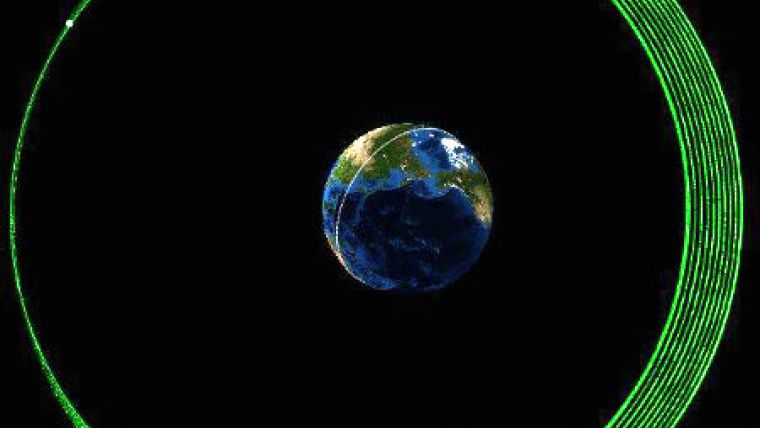Galileo Satellite Transmitted Signal
Europe’s fifth Galileo satellite, one of two delivered into an incorrect orbit by the VS09 Soyuz-Fregat launcher in August, transmitted its first navigation signal in space on Saturday, 29 November 2014. It has reached its new target orbit and its navigation payload has been successfully switched on. A detailed test campaign is underway now that the satellite is in a more suitable orbit for navigation purposes.
The fifth and sixth Galileo satellites, launched together on 22 August, ended up in an elongated orbit travelling up to 25,900km above Earth and back down to 13,713km. A total of 11 manoeuvres were performed across 17 days, gradually nudging the fifth satellite upwards at the lowest point of its orbit. As a result, it has risen more than 3,500km and its elliptical orbit has become more circular.
The commands were issued from the Galileo Control Centre by Space Opal, the Galileo operator, at Oberpfaffenhofen in Germany, guided by calculations from a combined flight dynamics team of ESA’s Space Operations Centre, ESOC, in Darmstadt, Germany and France’s CNES space agency. Satellite manufacturer OHB also provided expertise throughout the recovery, helping to adapt the flight procedures.
Until the manoeuvres started, the combined ESA–CNES team maintained the satellites pointing at the Sun using their gyroscopes and solar sensors. This kept the satellites steady in space but their navigation payloads could not be used reliably. In the new orbit, the satellite’s radiation exposure has also been greatly reduced, ensuring reliable performance for the long term.
The revised, more circular orbit means the fifth satellite’s Earth sensor can be used continuously, keeping its main antenna oriented towards Earth and allowing its navigation payload to be switched on. Significantly, the orbit means that it will now overfly the same location on the ground every 20 days. This compares to a normal Galileo repeat pattern of every 10 days, effectively synchronising its ground track with the rest of the Galileo constellation.
The satellite’s navigation payload was activated on 29 November 2014, to begin the full ‘In-Orbit Test’ campaign. This is being performed from ESA’s Redu centre in Belgium, where a 20m diameter antenna can study the strength and shape of the navigation signals at high resolution.
The first Galileo FOC navigation signal-in-space transmitting in the three Galileo frequency bands (E5/E6/L1) was tracked by Galileo Test User Receivers deployed at various locations in Europe, namely at Redu (B), ESTEC (NL), Weilheim (D) and Rome (I). The quality of the signal is good and in line with expectations.
The Search And Rescue (SAR) payload will be switched on in few days in order to complement the in-orbit test campaign.














